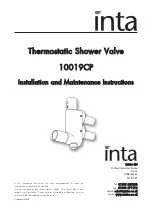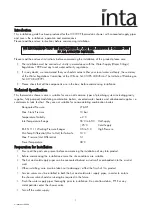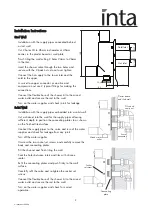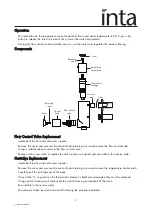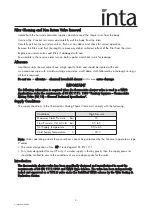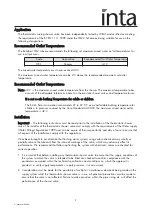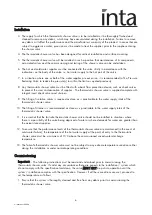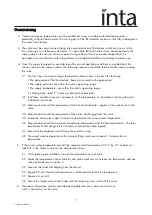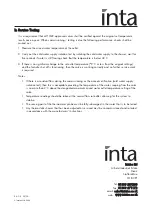
© Intatec Ltd 2009
7
Commissioning
2. Commissioning the temperatures must be carried out using a suitably calibrated thermometer –
preferably a digital thermometer. The sensing part of the thermometer probe must be fully submerged in
the water when testing.
3. The valve must be commissioned taking into consideration any fluctuations, which may occur within
the system due to simultaneous demands. It is advisable that any outlets which are connected to the
same supply as the shower valve are open during setting of the mixed water temperature. It is
advisable to ensure that the water temperatures are established before any attempt to commission.
4. Once the supply temperatures are stable and the normal operating conditions are established, the
shower valve can be commissioned. The following sequence should be followed when commissioning
the valve;
4.1 The first step in commissioning a thermostatic shower valve is to check the following:
• The designation of the thermostatic shower valve matches the application
• The supply pressures are within the valve’s operating range.
• The supply temperatures are within the valve’s operating range.
• Isolating valves (and ‘Y’ strainers preferred) are provided.
4.2 If all these conditions are met, proceed to set the temperature as stipulated in the manufacturer’s
installation instructions.
4.3 Measure and record the temperature of the hot and cold water supplies at the connection to the
valve.
4.4 Measure and record the temperature of the water discharging from the valve.
4.4 Isolate the cold water supply to the valve and monitor the mixed water temperature.
4.6 Measure and record the maximum mixed water temperature and the final temperature. The final
temperature found during the test should not exceed the values quoted.
4.7 Record all the equipment used during the commissioning.
4.8 The mixed water temperature at the terminal fitting must never exceed 2˚C above the set
temperature.
5. If the mixed water temperature exceeds the recommended temperature of 41˚C by 2˚C or does not
reach 41˚C the shower valve can be adjusted as follows:
5.1 With stable supply conditions remove the temperature control knob.
5.2 Rotate the temperature control knob by one spline clockwise to increase the temperature and one
spline anticlockwise to reduce it.
5.3 Measure the water discharging from the shower.
5.4 Repeat 5.2 until the desired temperature is stablised and record the temperature.
5.5 Repeat 4.4 and 4.5
5.6 Secure the temperature control knob with the retaining screw and re-fit the cover.
6. The above information must be recorded and updated on every occasion when any
work is carried out on the valve.

